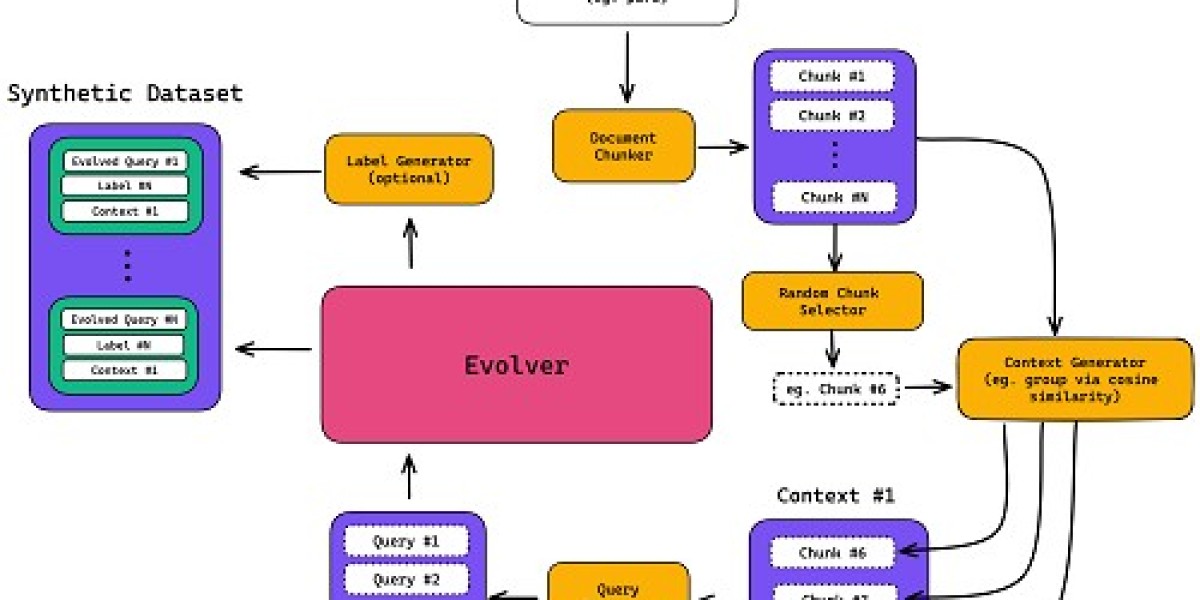Synthetic Data Generation Market Overview:
The Synthetic Data Generation Market has witnessed rapid expansion as organizations across industries strive to overcome limitations posed by scarce, sensitive, or biased real-world datasets. Synthetic data—artificially generated information that replicates the statistical properties of real data—enables machine learning (ML) and artificial intelligence (AI) models to train on robust, privacy-preserving datasets. Fueled by stringent data privacy regulations like GDPR and CCPA, as well as the growing importance of data-driven decision-making, the market is set to achieve significant growth through 2030. Key industries benefiting from synthetic data include healthcare, finance, automotive, and retail, where accurate yet anonymized data is critical for developing predictive algorithms. Organizations are increasingly adopting synthetic data to accelerate model development cycles, reduce labeling costs, and mitigate bias, positioning this market as a cornerstone of the modern AI ecosystem.
Get a sample PDF of the report at –
https://www.marketresearchfuture.com/sample_request/12216
Market Segmentation:
The Synthetic Data Generation Market can be segmented by data type, end-user industry, deployment mode, and region. By data type, offerings are classified into tabular data, image/video data, text data, and time-series data. Tabular data remains the largest segment, driven by its pervasive use in finance and healthcare analytics. Image and video data generation are rapidly gaining traction within automotive (for ADAS testing) and entertainment sectors. In terms of end-user industries, BFSI (banking, financial services, and insurance) leads adoption to enhance fraud detection and risk modeling, followed by healthcare for patient data simulation. Deployment modes include on-premises solutions preferred by organizations with stringent data security needs, and cloud-based platforms valued for scalability and lower total cost of ownership. As demand continues to rise, hybrid deployments are also emerging to balance performance and compliance requirements.
Key Players:
Competition in the synthetic data generation space is intensifying, with established analytics providers and specialized startups vying for market share. Leading players include Mostly AI, Tonic.ai, Hazy, Statice, and Gretel.ai, each offering unique capabilities spanning tabular, image, and text data synthesis. Technology giants such as Microsoft (with Azure’s Synthetic Data Service) and IBM (via Watson Knowledge Catalog’s data simulation features) further validate the strategic importance of synthetic data. These key players differentiate through advanced generative adversarial networks (GANs), variational autoencoders (VAEs), and differential privacy techniques, while also forging partnerships with cloud providers and system integrators. Mergers, acquisitions, and strategic collaborations remain prevalent, as companies seek to broaden their solution portfolios and strengthen geographic reach.
Recent Developments:
Recent developments underscore the market’s dynamism. In late 2024, a leading cloud provider launched a fully managed synthetic data platform that integrates with popular ML frameworks, reducing time-to-insight for data scientists. Additionally, a major pharmaceutical company announced the successful use of synthetic patient cohorts to accelerate drug discovery workflows without compromising patient privacy. In early 2025, regulatory bodies issued guidelines acknowledging synthetic data as a valid substitute for certain categories of personal data, further boosting adoption. Partnerships between automotive OEMs and synthetic data vendors have enabled advanced driver-assistance systems (ADAS) testing in simulated environments, trimming development cycles by up to 30%. These milestones demonstrate the broadening appeal of synthetic data across high-stakes, regulated industries.
Market Dynamics:
The Synthetic Data Generation Market is driven by a confluence of factors. Growth Drivers: Heightened privacy concerns, increased AI-enabled automation, and the need for high-quality labeled data accelerate demand. Restraints: Skepticism about data fidelity and integration challenges with existing data pipelines can slow adoption rates. Opportunities: Expansion into emerging markets and the development of domain-specific synthetic data suites (e.g., cybersecurity logs, IoT sensor feeds) promise new revenue streams. Challenges: Ensuring synthetic datasets maintain edge-case diversity and avoiding inadvertent bias replication require ongoing R&D. As vendors enhance explainability and validation tools, organizations will gain greater confidence in deploying synthetic data for mission-critical applications.
Regional Analysis:
Geographically, North America dominates the market, accounting for over 35% of global revenues, thanks to early AI adoption and robust data privacy regulations. Europe follows, with strong growth projected in the UK and Germany due to significant investments in AI research and healthcare innovation. The Asia-Pacific region is the fastest-growing, propelled by rapid digital transformation in China, India, and Japan, along with supportive government initiatives. Latin America and Middle East & Africa are emerging markets, where synthetic data can address infrastructure limitations and privacy concerns in sectors like agriculture, energy, and telecom. As regional players establish local data centers and compliance frameworks, synthetic data solutions will become more accessible worldwide.
Browse a Full Report –
https://www.marketresearchfuture.com/reports/synthetic-data-generation-market-12216
Future Outlook:
Looking ahead, the Synthetic Data Generation Market is poised for double-digit CAGR through 2030. Advances in generative AI, including diffusion models and reinforcement learning–based synthesis, will enhance data realism and diversity. Integration with MLOps platforms and automated validation tools will streamline workflow integration for data scientists and engineers. As organizations strive to democratize AI, synthetic data will become an essential asset—fueling innovation across self-driving cars, precision medicine, and financial forecasting—while safeguarding individual privacy.
The Synthetic Data Generation Market represents a transformative shift in how organizations approach data scarcity, privacy, and bias. By offering scalable, customizable, and compliant data solutions, synthetic data empowers AI and ML initiatives across industries. With continued technological breakthroughs and regulatory acceptance, the market is set to redefine data-driven innovation for years to come.
Top Trending Reports:
Contact
Market Research Future (Part of Wantstats Research and Media Private Limited)
99 Hudson Street, 5Th Floor
New York, NY 10013
United States of America
+1 628 258 0071 (US)
+44 2035 002 764 (UK)
Email: sales@marketresearchfuture.com
Website: https://www.marketresearchfuture.com



